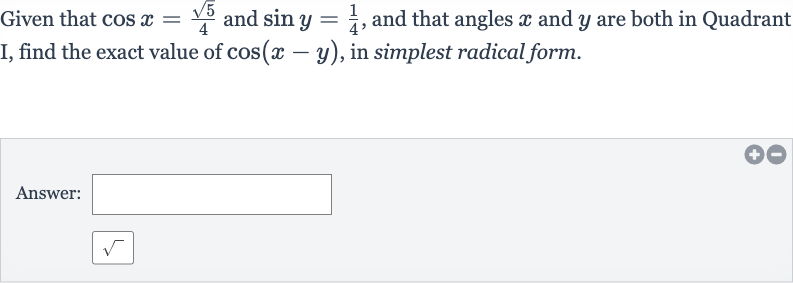Full solution
Q. Given that and , and that angles and are both in Quadrant I, find the exact value of , in simplest radical form.Answer:
- Given Trigonometric Values: We are given that and , and we need to find . We can use the cosine difference identity, which states that . First, we need to find and .
- Find : Since and is in Quadrant I, where all trigonometric functions are positive, we can find using the Pythagorean identity . We calculate as follows:
- Find : Similarly, we can find using the Pythagorean identity . We calculate as follows:
- Calculate : Now that we have and , we can substitute these values into the cosine difference identity:
- Simplify : We can simplify by factoring out the perfect square:
- Substitute and Simplify: Substitute the simplified form of back into the expression for :This is the exact value of in simplest radical form.

